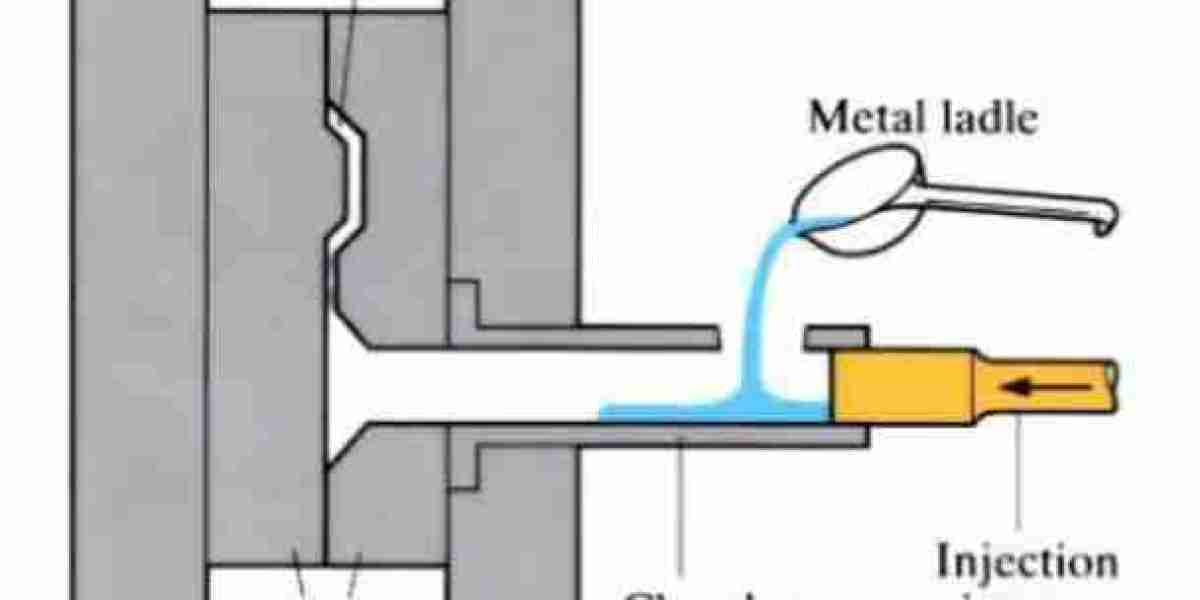High-pressure die casting (HPDC) is a widely used manufacturing process that produces complex metal parts with exceptional precision and durability. Known for its efficiency and ability to create detailed components, this process is indispensable across industries ranging from automotive to consumer electronics.
To know more about High-Pressure Die Casting- https://www.indianmetal.solutions/
What is High-Pressure Die Casting?
High-pressure die casting involves forcing molten metal into a steel mold, called a die, at high pressure. Once the metal solidifies, the mold is opened, and the part is ejected. The result is a high-quality, near-net-shape component that often requires little to no post-processing.
Steps in the High-Pressure Die Casting Process
Die Preparation
The mold is cleaned and coated with a lubricant to facilitate metal flow and cooling.
Molten Metal Injection
Molten metal, typically aluminum, zinc, or magnesium, is injected into the die at high pressure.
Solidification
The metal cools and solidifies within the mold, taking on its shape and details.
Ejection
The die is opened, and the part is ejected. Excess material, called flash, is trimmed.
Finishing (if necessary)
Secondary operations, such as machining or coating, may be performed to meet specific requirements.
Key Advantages of High-Pressure Die Casting
Precision and Complexity
Produces components with intricate designs, thin walls, and tight tolerances.
Ideal for parts requiring detailed geometries.
High Production Efficiency
Short cycle times enable mass production.
Suitable for producing millions of identical parts.
Excellent Surface Finish
Results in smooth surfaces that often eliminate the need for additional finishing.
Material Versatility
Compatible with non-ferrous metals like aluminum, zinc, and magnesium.
Strength and Durability
Produces components with excellent mechanical properties.
Cost-Effectiveness
Low material wastage and reduced need for secondary operations.
Applications of High-Pressure Die Casting
Automotive Industry
Engine Components: Cylinder heads, crankcases, and transmission housings.
Structural Parts: Chassis components and brackets.
Aesthetic Elements: Decorative trims and wheels.
Aerospace and Defense
Lightweight, high-strength components like housings, connectors, and brackets.
Consumer Electronics
Frames, housings, and heat sinks for smartphones, laptops, and appliances.
Medical Equipment
Precision parts for diagnostic machines and surgical tools.
Industrial Equipment
Gears, valves, and pumps for machinery and heavy equipment.
Telecommunication
Enclosures and components for networking devices and satellite systems.
Lighting and Electrical Fixtures
Durable, heat-resistant housings for LEDs and electrical boxes.
Energy Sector
Wind turbine components, solar panel mounts, and electric vehicle (EV) parts.
Factors Influencing High-Pressure Die Casting Applications
Material Selection
Aluminum: Lightweight, corrosion-resistant, and strong; ideal for automotive and aerospace applications.
Zinc: Excellent for intricate designs requiring high precision and strength.
Magnesium: Lightweight and suitable for electronics and automotive applications.
Part Size and Complexity
The process excels in creating small to medium-sized parts with complex geometries.
Production Volume
Best suited for high-volume production due to its cost-effectiveness and efficiency.
Surface Finish Requirements
Produces smooth, aesthetic surfaces suitable for visible components.
Emerging Trends in High-Pressure Die Casting
Lightweighting in Automotive and Aerospace
Increasing demand for lightweight materials like aluminum and magnesium to improve fuel efficiency and reduce emissions.
Electrification of Vehicles
Growth in EV manufacturing drives demand for die-cast battery enclosures and lightweight components.
Sustainability Focus
Advancements in recycling and use of sustainable alloys.
Automation and Precision Engineering
Integration of robotics and advanced sensors for enhanced accuracy and efficiency.














